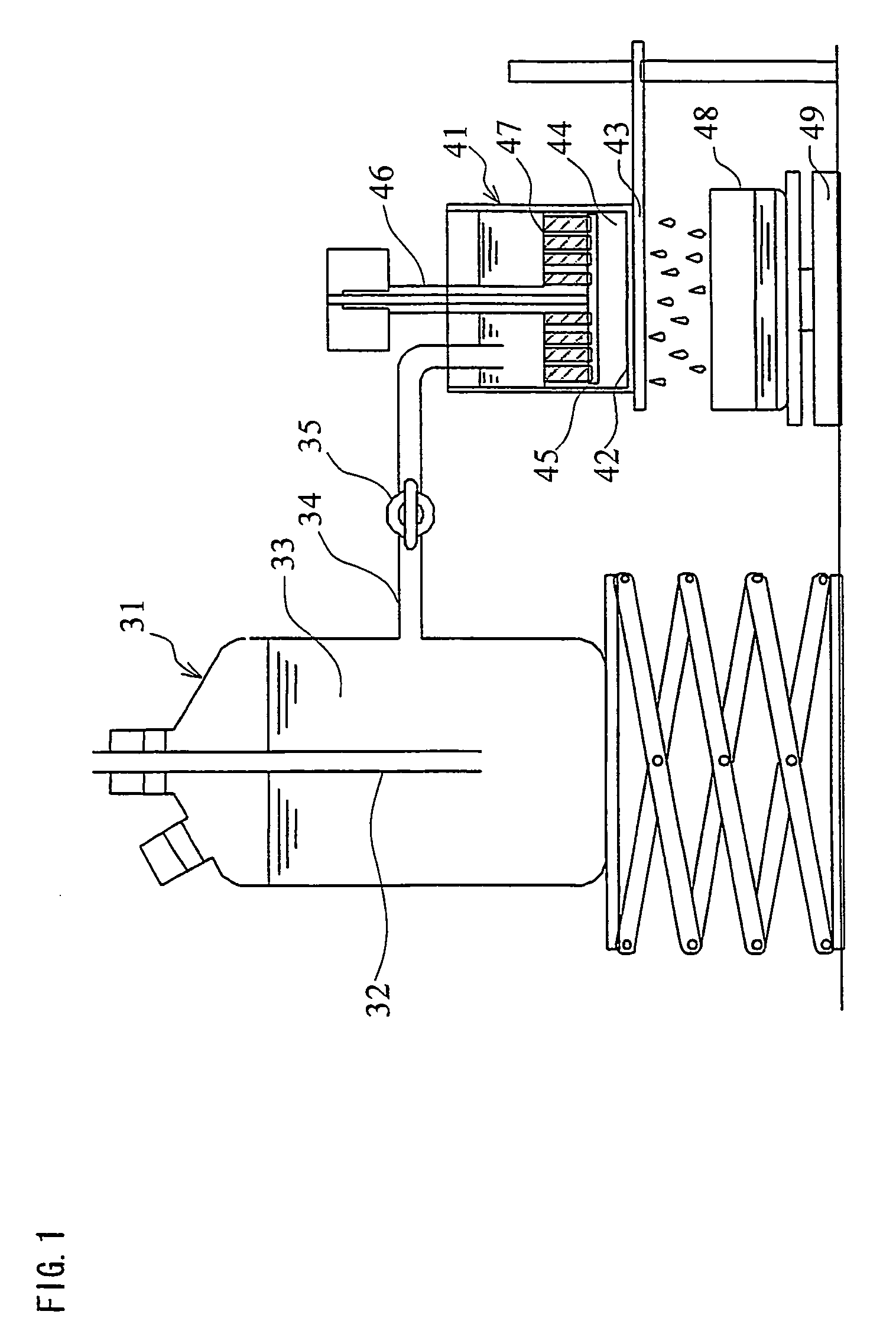Particulate water absorbent containing water absorbent resin as a main component
a technology water absorbent resin, which is applied in the direction of synthetic resin layered products, natural mineral layered products, metal layered products, etc., can solve the problems that water absorbent resins still cannot deliver sufficient performance in practical use as in paper diaper applications, and the performance of water absorbent resins is not sufficien
- Summary
- Abstract
- Description
- Claims
- Application Information
AI Technical Summary
Benefits of technology
Problems solved by technology
Method used
Image
Examples
reference example 1
[0151]A solution (1) was prepared by dissolving 14.6 g of polyethylene glycol diacrylate (the average number of moles of ethylene oxide added was 8) in a 4500 g aqueous solution of sodium acrylate (monomer concentration of 39 weight percent) that had been neutralized to a neutralization ratio of 71.3 mole percent by mixing caustic soda with an acrylic acid containing a non-detectable (ND) amount (less than 1 ppm) of protoanemonin and furfural, and 50 ppm of p-methoxyphenol (with respect to the weight of acrylic acid).
[0152]The solution (1) was deaerated for 30 minutes in an atmosphere of nitrogen gas, and was fed to a reactor that had been prepared by placing a lid on a 10 L stainless-steel two-arm kneader equipped with two sigma vanes and a jacket. Inside the reactor was replaced with nitrogen gas while maintaining the temperature of the solution (1) at 30° C. Thereafter, an aqueous solution of 2.46 g sodium persulfate and 0.10 g L-ascorbic acid was added to the solution (1) with s...
reference example 2
[0154]A solution (2) was prepared by dissolving 11.7 g of polyethylene glycol diacrylate (the average number of moles of ethylene oxide added was 8) in a 5200 g aqueous solution of sodium acrylate (monomer concentration of 39 weight percent) that had been neutralized to a neutralization ratio of 60.0 mole percent by mixing caustic soda with an acrylic acid containing a non-detectable amount of protoanemonin and furfural, and 50 ppm of p-methoxyphenol (with respect to the weight of acrylic acid).
[0155]The solution (2) was deaerated and charged to a reactor that had been prepared by placing a lid on a 10 L stainless-steel two-arm kneader equipped with two sigma vanes and a jacket, as in Reference Example 1. Inside the reactor was replaced with nitrogen gas at a maintained temperature of 30° C. Thereafter, an aqueous solution of 2.88 g sodium persulfate and 0.10 g L-ascorbic acid was added to the solution (2) with stirring. A polymerization reaction started about a minute later, and th...
reference example 3
[0157]A solution (3) was prepared by dissolving 58.5 g of polyethylene glycol diacrylate (the average number of moles of ethylene oxide added was 8) in a 5650 g aqueous solution of sodium acrylate (monomer concentration of 37 weight percent) that had been neutralized to a neutralization ratio of 75.0 mole percent by mixing caustic soda with an acrylic acid containing a non-detectable amount of protoanemonin and furfural, and 50 ppm of p-methoxyphenol (with respect to the weight of acrylic acid).
[0158]The solution (3) was deaerated and charged to a reactor that had been prepared by placing a lid on a 10 L stainless-steel two-arm kneader equipped with two sigma vanes and a jacket, as in Reference Examples 1 and 2. Inside the reactor was replaced with nitrogen gas at a maintained temperature of 30° C. Thereafter, an aqueous solution of 2.88 g sodium persulfate and 0.10 g L-ascorbic acid was added to the solution (3) with stirring. A polymerization reaction started about a minute later,...
PUM
| Property | Measurement | Unit |
|---|---|---|
| particle size | aaaaa | aaaaa |
| particle size | aaaaa | aaaaa |
| pressure | aaaaa | aaaaa |
Abstract
Description
Claims
Application Information
 Login to View More
Login to View More - R&D
- Intellectual Property
- Life Sciences
- Materials
- Tech Scout
- Unparalleled Data Quality
- Higher Quality Content
- 60% Fewer Hallucinations
Browse by: Latest US Patents, China's latest patents, Technical Efficacy Thesaurus, Application Domain, Technology Topic, Popular Technical Reports.
© 2025 PatSnap. All rights reserved.Legal|Privacy policy|Modern Slavery Act Transparency Statement|Sitemap|About US| Contact US: help@patsnap.com



